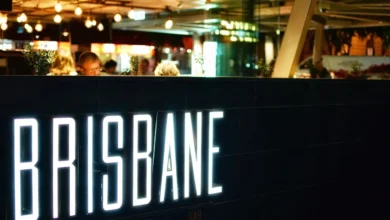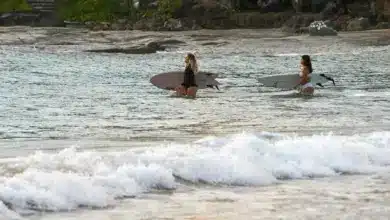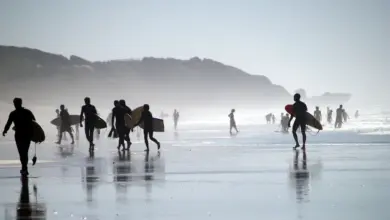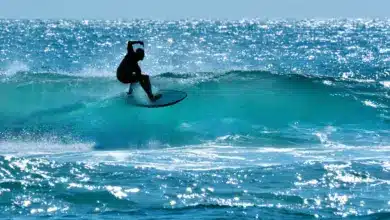Best Surf Locations In Tasmania
Surfing In Tasmania
Tasmania is often overlooked for a surf destination, but it does have some very good waves. When the water is warmest, late summer/early fall is when you can surf best in Tasmania. The best wind and swell conditions are found in the autumn and winter.
The west coast can experience offshore days in conjunction with moderate swells. Even then, only the top third of the West Coast is accessible. Marrawah, in the north-west corner of Australia, is known for its excellent surf all year. Marrawah’s three beaches, Ann Bay Mawson Bay, and Green Point can offer rides of up to 100 metres when the swell and wind are westerly.
South West is wild and remote. There are some classic reefs and waves, but it will likely remain unsurfed for years to come.
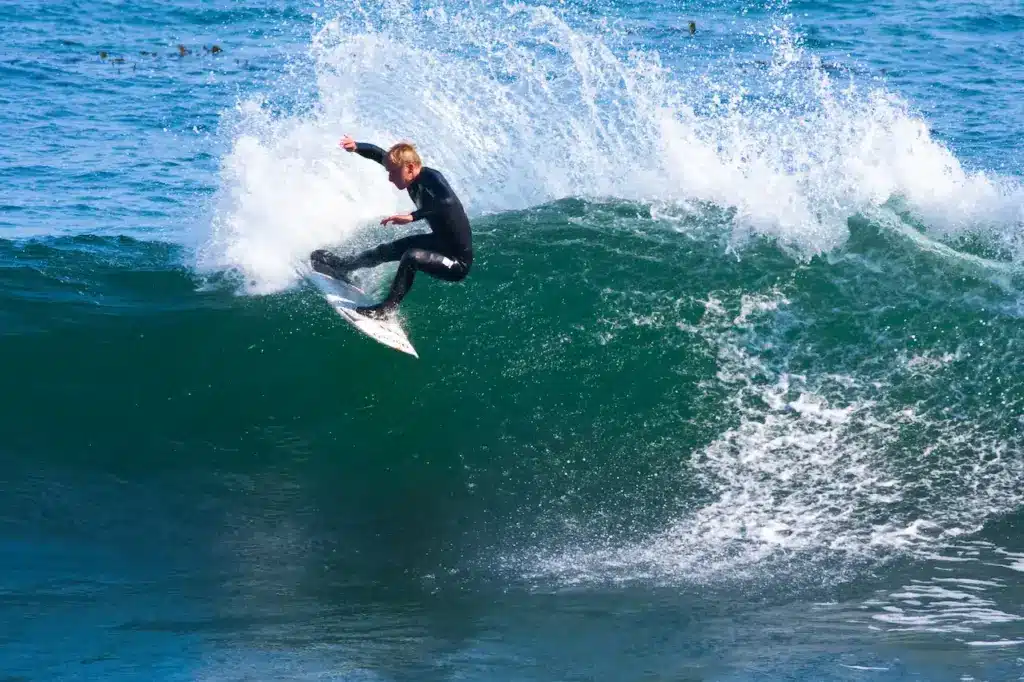
North Coast
There can be long flat periods, especially during summer. Waves are not big, but they’re good. The beach breaks near the mouths of the Mersey River and the Tam O’Shanter are exceptions.
King Island, on the western side of Bass Strait, on Tasmania’s mainland, has some of the best surfing in the north. The diverse coastline of King Island, which is in the path the Roaring Forties took, means that the surf will always be up somewhere. Tracks magazine ranked Martha Lavinia Beach on King Island’s East Coast as Australia’s top beach break. British Admiral Beach, on the west coast of the island, enjoys an easterly breeze and westerly waves, while Fitzmaurice bay in the south-west is where adventurous cows go to the sea at low tide to eat nutritious kelp.
East Coast
It is open again to the ocean – the Tasman Sea – and it gets good waves, especially when winter lows have passed into the Tasman Sea. Scamander, or the surf coast as Tasmanians refer to it, is probably the best known of all the surfing spots in Tasmania. There are miles of white beaches with a consistent surf. There are some great surf beaches along the coast between Scamander and Orford. In the north-east, the eastern arm of Georges Bay’s entrance and the mouth of Scamander river are popular surf spots.
Accommodations are mainly self-catering holiday homes, with excellent free camping. There are also motels, resorts at Ironhouse Point and Scamander, as well as caravan/cabin park, motels and a resort. The climate here is mild all year long, so you can surf even in the winter. Scamander, Seymour and Chain of Lagoons are some of the most popular spots. But surfing is enjoyed all along the south coast from St Helens Point down to Bicheno.
Hobart Area
Hobart is situated on a large, shallow bay. However, swells can sometimes reach right into the bay. The most popular beaches are Park and Clifton Beaches. Clifton Beach, only 30 minutes from the city center, is the most popular. South end is generally a little softer, with a right defined on moderate SE-S waves and some protection from West wind. The beach gets a little pushier as you go up the beach. Deep channels flank the sandbanks to deal with the close-out.
South Arm has several good surfing beaches, and SLCA patrolled Clifton Beach. Seven Mile Point is a classic break near Hobart Airport, and other reefs and points breaks can be found from Swansea down to Southport. Southerly swells are smaller and bring waves to the many southerly-facing beaches.
Eaglehawk Neck is located further south, in the Hobart region. Shipstern Bluff, also known as the Tasman Peninsula’s Shipstern Bluff, is located beyond Port Arthur Historic Site.
Shipstern Bluff
Shipstern Bluff, also known as Devil’s Point is widely accepted as the most difficult surfing location in Australia. Under the bluff heaving waves hit a coral reef, creating a large body of water that appears out of nowhere. This churning wave has attracted elite surfers around the globe, dominated surf media, and set the standard for extreme surfing in Australia.
It is very close to Port Arthur, which makes it a unique attraction for spectators. Anyone who can walk for 2 hours (a fantastic walk) and still be in the lineup when the waves are up at Shippies is welcome. A reef is hit by a swell that causes a large body of water to appear out of nowhere. This churning wave has been attracting elite surfers around the globe, dominating the surf media, and setting the bar for extreme surf in Australia.
Shipstern Bluff or “The Stern” has placed South East Tasmania on the map of world surfing. Shipstern Bluff is one of Australia’s largest waves. It begins 500m past the Port Arthur Historic Site turnoff, along a gravel road through a pear-orchard and two hours of walking on a trail flanked with scrub. The rugged Tasman peninsula headland is widely regarded as the most difficult surfing spot in Australia. The heaviest waves are found below the bluff. It is unique because it is so accessible to spectators. Port Arthur is right around the corner. Shippies is open to anyone who can walk for 2 hours (a fantastic walk) and still be in the lineup when the waves are up. One can see the best surfers in the world and Tasmania at just 100 meters from this incredible wave.
Forestier and Tasman Peninsulas
There are many other surf spots nearby if you’re in Tasmania’s South and find Shipsterns Bluff too intimidating and difficult to reach. Eaglehawk Neck is the isthmus connecting the Forestier Peninsula and Tasman Peninsula. It has excellent waves when the wind is westerly and the swell south-easterly. Roaring Beach, on the Tasman Peninsula, and Remarkable caves are also less difficult favourites.
Boneyard, at Martion Bay, is another of South East Tassie’s jewels. The Yard is a world-class wave that has been hailed by all those who have surfed it as Australia’s best lefthander. The wave breaks on a permanent sandbar over 800 meters off Marion Bay Beach. Local surfers are aware that when Boneyard breaks, there are other good surfing opportunities nearby on the Tasman Peninsula and Eaglehawk Neck.
Bruny Island
Bruny Island’s west coast is protected by the D’Entrecasteaux Channel. However, its east and south coastlines take the brunt of the Antarctic swells and water temperatures. These are the obvious places to visit when looking for that perfect wave. Cloudy Bay is the best of the southern breaks on Bruny Island. Australia’s most southern surf beach. Surf it with a southerly wind and a northerly swell. Bruny Island can be reached by a 15 minute ferry ride from Kettering which is located 40 minutes south of Hobart.
South Cape Bay
South Cape Bay, located in the far south of Tasmania, is a beautiful beach break with huge waves. Surfers are required to carry their boards for 7km along the stunning walking trail beyond Cockle Creek. It is advisable to have a few boards with you as boards can snap when the waves are up. Lion Rock is the most consistent. This left-hander will pick up any southwest swell and produce nice tubes and walls from 3′ up to 10′. Cockle Creek can be reached in two hours by driving south-west from Hobart.
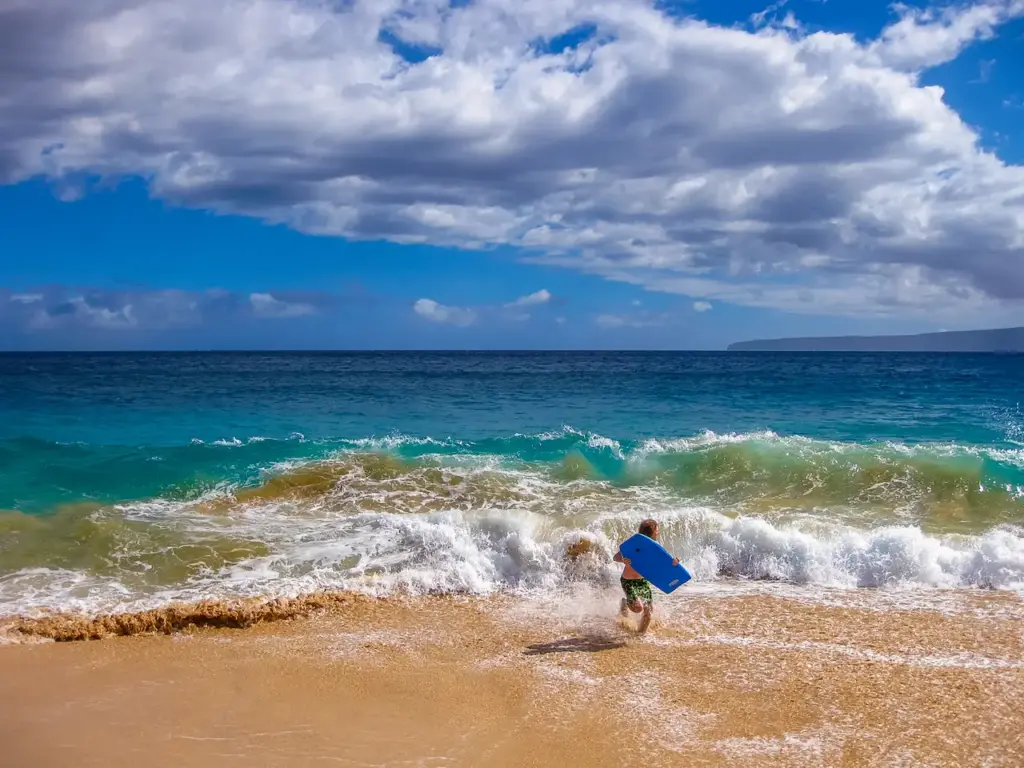
Eddystone Rock
Eddystone Rock is located on the south coast, Australia’s newest big-wave hotspot. It was first surfed in 2008 (like Shipstern Bluff surfers here are towed onto the waves with jet-skis). The remoteness of the location makes it out of reach for all but the most dedicated surfers. Local fishermen, who had known the legend for years, showed the surfers the location. Eddystone, not to be confused with Eddystone Point, a similar-named rock off the north-east coastline of Tasmania, is a small tower-shaped island or rock, 30m high, and 27km from South East Cape. Abel Tasman described the island in 1642 as a “tall, obtuse square tower”. Pedra Branca is a small, 2.5-hectare rock located 2.2 kilometers to the west.
West Coast
Marrawah, Tasmania’s most western community and farthest settlement away from Hobart is the most popular surf spot in Tasmania’s North. Marrawah can be reached from Tasnania’s north-west region. Its closest major towns are Smithton or Stanley. Ann Bay, Mawson Bay, and Green Point are three of Marrawah’s beaches that can offer rides up to 100 metres long when the swell and wind direction is west. This area’s record wave was almost 20 metres, with winds and surf rolling in unbroken for nearly 17,000 kilometers.
Marrawah hosts the National Wave Sailing Championships, a title that is highly prized and worth $22,000. It takes place over five days in February and combines both wind and waves to attract visitors and competitors. This event is followed by the West Coast Surf Classic – an amateur surfing carnival that has existed for 30 years. It attracts 1000 spectators and participants.
Strahan offers a variety of water sports such as kiteboarding and wind-surfing. Ocean Beach is the most popular place for these sports. Strahan’s surfing schools provide lessons to novice surfers of all ages.

